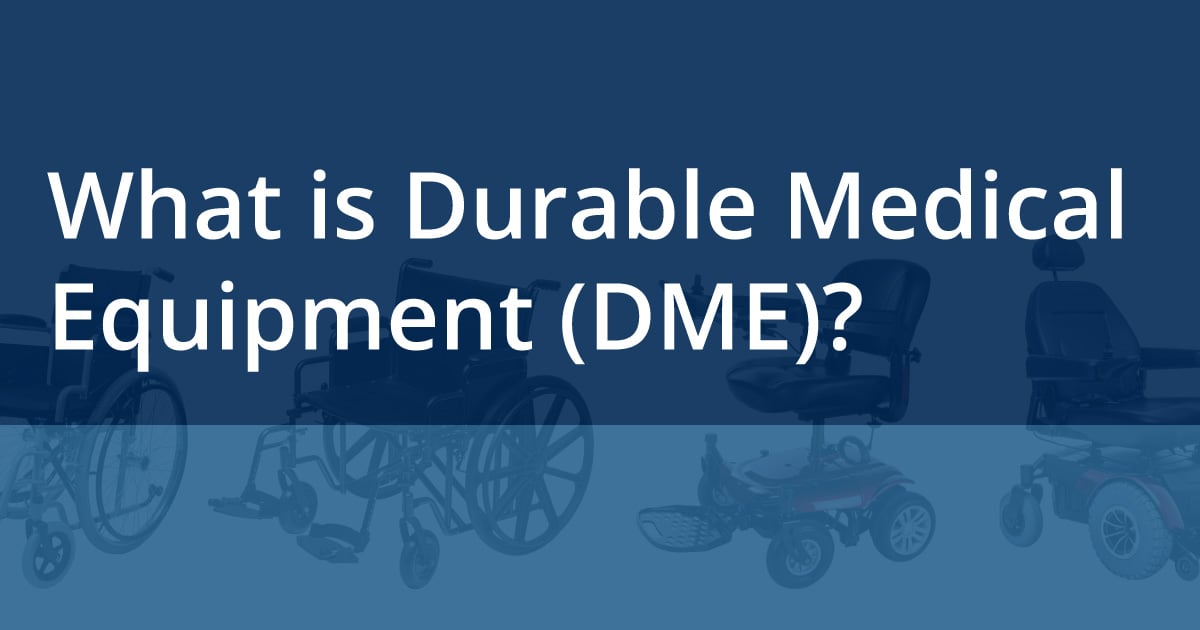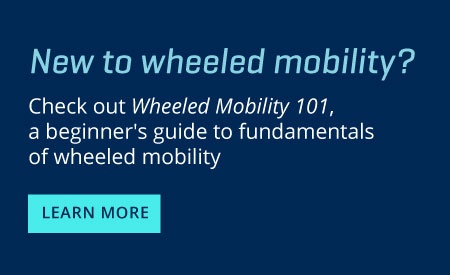One of the most important concepts to understand when charged with selecting a mobility device is that not all equipment is the same! There are 2 different categories of equipment that have distinct requirements and criteria: Durable Medical Equipment (DME), and Complex Rehabilitation Technology (CRT). Today we will look more closely at the more standard or basic category, DME.
DME equipment is often what people generally think of when they think of wheelchairs. These are the standard wheelchairs you see in hospitals or nursing homes and are purchased in bulk to meet short term needs. They also include scooters and standard power wheelchairs with a captain’s seat and back. DME wheelchairs are considered standard or basic as they come in limited sizes and have very little adjustability. These wheelchairs are not designed to fit individual needs but are more for short term mobility needs.
Medicare defines DME equipment by the following standards:
- Used for a medical purpose
- Used in the home
- Able to withstand repeated use
- Not usually useful to someone who is not sick, injured, or disabled
Who might be an appropriate user for DME mobility equipment?
When it comes to DME mobility equipment such as manual and power wheelchairs or power operated vehicles (POVs), the list of below can help you identify if DME is appropriate for your client.
- Short-term mobility needs (e.g. temporary limitations post-surgery, fracture, or other medical condition)
- Sits in the wheelchair for short periods of time (e.g. for transport pushed by someone else)
- Propels only short distances
- Has limited/no need for positioning support or adjustment beyond that provided by an appropriate seat cushion or back support
- Does not have a postural deformity and is at minimal to no risk for developing one
- Sits in "standard" dimensions without compromise
- Has normal tone or minimal tonal abnormalities
- Has good sitting balance
- Does not have pain with sitting
Medicare requirements for DME equipment are not stringent but entail the following:
- Physician order and recent exam documenting need for mobility device
- No PT/OT evaluation or ATP involvement is required
- Specific justification of the product may come from physician or therapist
- On-site home evaluation is not required (but it is best to always conduct one if you are involved)
Does that mean that typically clients without a serious injury or condition should only need DME equipment?
Definitely not. Go back over the list of qualities that a DME wheelchair user should have. With your client in mind, if you answer "no" or "not really" to ANY of those traits, they may benefit from more advanced equipment.
The populations below (but not limited to) have traditionally been provided with standard DME equipment. This does not mean that it is actually appropriate for them.
- Elderly clients
- Bariatric individuals
- Someone with a low activity level
- Clients dependent in mobility
Always consider best clinical practice when dealing with ANY population and fight to provide what is most clinically appropriate. Many of these and other individuals might actually benefit from:
- A lighter weight and optimally configured wheelchair to increase and/or allow their ability to propel and independently perform ADLs
- Adjustability in their seating system to help maintain posture, prevent deformities, and decrease pain
- Individualized sizing to increase function, mobility, skin protection, and sitting tolerance
An appropriate wheelchair that is configured, adjusted, and uniquely fit to them can increase independence, activity level, and quality of life for more than just the individual who is already active and independent. Also remember the 5-year rule and consider the client's prognosis to ensure you are meeting their needs over time.
Join us for our next post as we discuss the more advanced category of equipment, Complex Rehabilitation Technology (CRT). And to learn more about the fundamentals of wheeled mobility check out our guide Wheeled Mobility 101.
 Stacey Mullis, OTR/ATP
Stacey Mullis, OTR/ATP
Director of Clinical Marketing
Stacey serves as Director of Clinical Marketing for Permobil. A practicing OTR for over 20 years, she has experience in school-based pediatrics, inpatient rehabilitation, long term care, and home health. With her interest in wheelchair seating and positioning, Stacey engaged the challenges of providing appropriate seating in various clinical settings. She now uses this experience to develop programs and resources to educate clinicians on the principles of seating and wheeled mobility. She is passionate about equipping clinicians and through her previous role as Director of Clinical Education with Comfort Company and now with Permobil she has taught nationally and internationally to increase therapist capacity in this specialty area. Mullis graduated from Western University in London, Ontario, Canada with a BA Linguistics and BSc Occupational Therapy. She is a member of the NCOTA, CTF Executive Board, NRRTs, RESNA, and AOTA.

